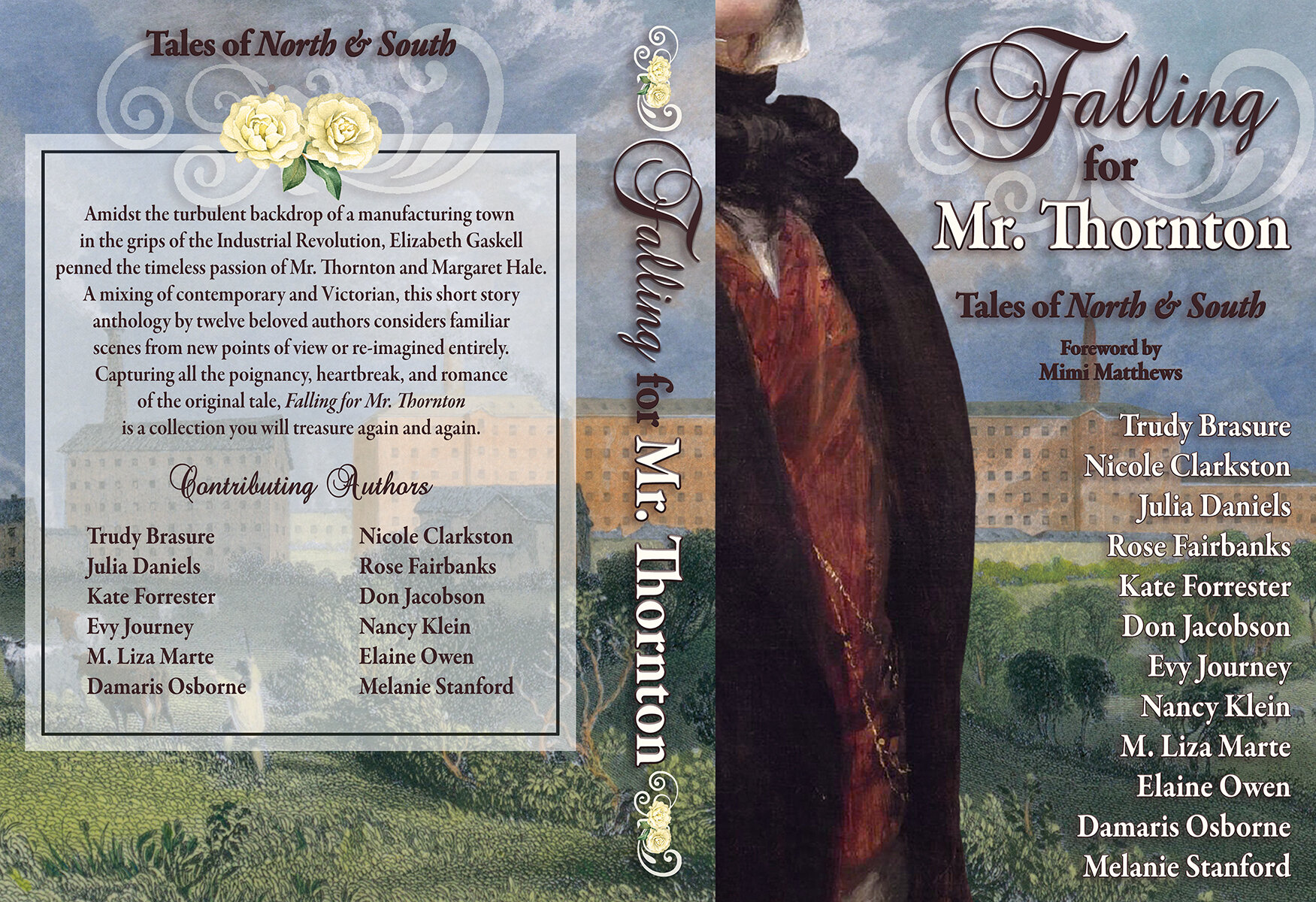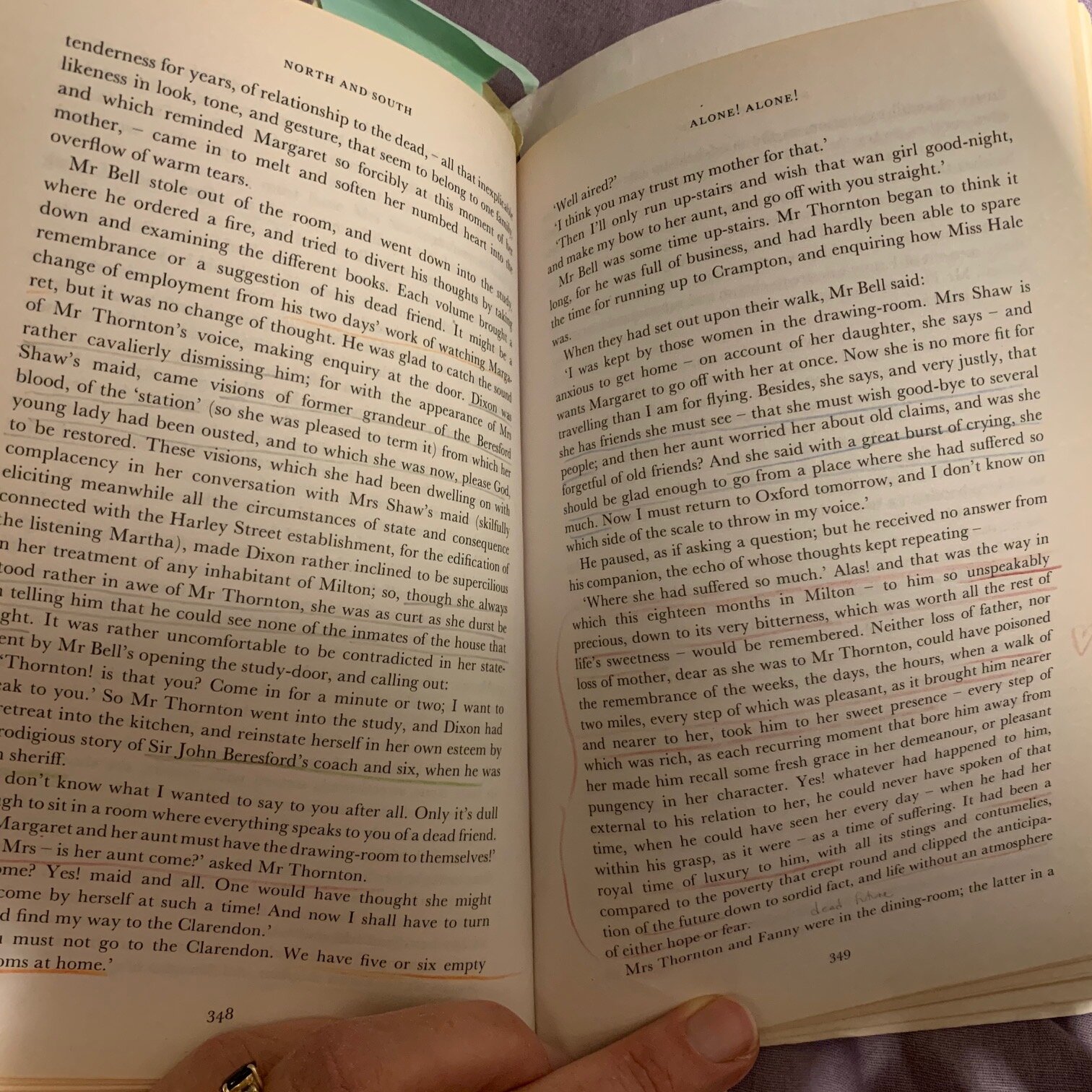It’s cover reveal day! And I’m excited to reveal the beautiful cover for our soon-to-be published collection of North and South stories!
With a just a glimpse of Mr. Thornton himself, JanetTaylor’s lovely artwork conveys the Victorian setting and the romantic aura that most of our stories include.
Here is the ebook cover:
And here is the full paperback cover:
…And there’s a giveaway!
Leave a comment below for a chance to win a copy of Falling For Mr. Thornton: Tales of North & South. The winner will be announced next week, on November 19th.
BLOG TOUR
Stop by More Agreeably Engaged for the launch of our blog tour on November 14. You’ll find out how each author became an ardent fan of North and South. (Clue: it often involves a British actor!)
November 14 - More Agreeably Engaged; Blog Tour Launch & Giveaway
November 19 - My Jane Austen Book Club ; Author Interview & Giveaway
November 21 - From Pemberley to Milton; Review & Giveaway
November 25 - So Little Time…; Guest Post & Giveaway
December 5 - My Vices and Weaknesses; Review & Giveaway
December 10 - Diary of an Eccentric; Guest Post & Giveaway
December 16 - Babblings of a Bookworm; Review & Giveaway
December 20 - Austenesque Reviews; Guest Post & Giveaway
Follow us at our Facebook page to keep updated on all the activity about Falling for Mr. Thornton.
Hope you’re all excited as we are about expanding the Thornton lore out there!
Enjoy diving into more of John Thornton and Margaret Hale’s world when you pick up this new anthology.

























